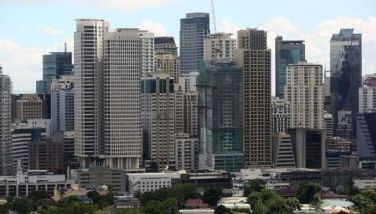Globe, Smart battle for LTE supremacy
MANILA, Philippines -- The country's two telecommunication giants Globe Telecom and Smart Communications Inc. are battling it out for Long Term Evolution (LTE) service dominance.
Both companies claim of "firing up" new LTE cell sites nationwide, promising superfast mobile connectivity to subscribers.
Globe said its LTE coverage, initially offered only in Makati City, has steadily increased coverage by bolstering its LTE infrastructure in key cities in Metro Manila as well as major areas outside the metropolis.
Among Globe's covered cities include Pasig, Quezon City, Taguig, Manila, Muntinlupa, and also Cebu City and Boracay in Malay, Aklan in the Visayas.
Within these locales, Globe has switched on its LTE signal in some of the major avenues, villages and subdivisions, business districts, upscale malls, hotels, busy commercial zones, government offices, schools, and sporting arenas and hospitals.
Meanwhile, Smart said its latest round of expansions is the largest and most expansive the telco has achieved since the service was made available commercially in August 2012.
“Just a couple of weeks ago we said that LTE has outpaced 3G in terms of initial deployment. The simultaneous introduction of LTE around the country is proof of that and it’s all thanks to the Philippines’ first and only 100 percent super-charged network,†said Lloyd Manaloto, head of the Smart Broadband Internet and Data Services.
Manaloto said Smart's LTE coverage includes several areas in Davao City in Mindanao, Iloilo City, Cebu City, Mandaue City, and Bacolod City in Visayas, Baguio City, Laoag City, San Fernando City, Cabanatuan City, Urdaneta City, Antipolo City, Olongapo City, Tagaytay City, and Dagupan City in Luzon.
The executive added the deployment extends Smart LTE’s presence as it covers a total of 46 cities and 69 municipalities nationwide.
With 54,000 kilometers of FOCs or Fiber Optic Cables installed across the country, Smart and parent company PLDT boast of over four times more fiber power than its competition.
“Fiber optic cables uses beams of light to communicate from the core network to our base stations,†said Manaloto. “This gives Smart a clear ‘fiber optic advantage’ which simply cannot be matched by any other network.â€
However, according to Globe President and CEO Ernest Cu, the LTE philosophy of Globe is to let their subscribers go around contiguous areas without having to lose their LTE signal.
“We don’t want them to be constrained in a specific LTE spot and be cut-off after stepping out of there. The Globe LTE coverage lets them freely walk around places they frequent such as malls, offices and the like and still receive our LTE signal seamlessly,†Cu said.
Cu also said Globe's LTE expansion will quickly cover more ground across the Philippines as the first phase of its modernization nears completion with its new network primed for LTE, and will be supported by the ongoing rollout of over 12,000 kilometers of fiber optic cable spanning the archipelago.
Robert Tan, Chief Technical Advisor of Globe, said the development further bolsters the company’s 4G network as it introduced technologies in anticipation of the incremental demand for mobile data.
“We have continued to expand our LTE coverage as we focus on large, contiguous areas, instead of 'pocket activations' and 'hot spots' to ensure greater and more stable coverage for customers,†Tan said. “With the Globe LTE, we have upped the ante in terms of internet connectivity by as much as 42 Mbps, currently the fastest available there is now.â€
- Latest
- Trending

























